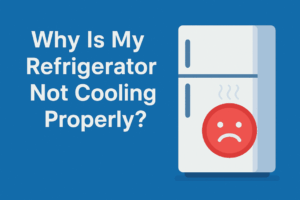In the fast-paced world of food service, packaging is often an overlooked yet crucial component. Fast food boxes, in particular, play a multifaceted role beyond simply containing food. They serve as brand ambassadors, product protectors, and even marketing tools. This blog delves deep into the world of fast food boxes, exploring their significance, design considerations, and the impact they have on the overall customer experience.
The Importance of Fast Food Boxes
- Product Protection: Custom fast food packaging are the first line of defense against spills, contamination, and temperature fluctuations. They ensure that food reaches customers in optimal condition.
- Brand Identity: A well-designed box is a miniature billboard for your brand. It reflects your company’s values, personality, and overall image.
- Customer Experience: The quality of the packaging can significantly impact the customer’s perception of the food and the brand. A sturdy, attractive box enhances the overall dining experience.
- Marketing Tool: Fast food boxes can be used for promotional purposes, limited-time offers, or special events.
Types of Fast Food Boxes
The fast-food industry offers a diverse range of products, necessitating a variety of box designs. Here are some common types:
- Burger Boxes: These boxes are designed to hold burgers, fries, and sometimes dipping sauces.
- Chicken Boxes: Often used for chicken tenders, nuggets, or wings, these boxes can be single or multi-compartment.
- Sandwich Boxes: Similar to burger boxes but with different dimensions to accommodate various sandwich sizes.
- Pizza Boxes: These come in various sizes to fit different pizza diameters and often include dividers for slices.
- Combo Boxes: Designed to hold multiple food items, these boxes are versatile and popular for meal deals.
Design Considerations for Fast Food Boxes
When designing fast food boxes, several factors must be considered:
- Size and Shape: The box should be the perfect fit for the food it contains, allowing for easy handling and consumption.
- Material: The choice of material impacts the box’s durability, printability, and environmental impact. Common options include cardboard, Kraft paper, and coated paperboard.
- Design: The box’s appearance should align with the brand’s identity and appeal to the target audience.
- Functionality: The box should be easy to open, close, and hold, with a focus on preventing leaks and spills.
- Sustainability: Using eco-friendly materials and reducing waste are becoming increasingly important considerations.
The Art and Science of Fast Food Box Design
A successful fast food box is a blend of art and science. It should be visually appealing while also meeting functional requirements. Key design elements include:
- Branding: Incorporate the brand’s logo, colors, and messaging prominently.
- Imagery: Use high-quality images of food to stimulate appetite.
- Typography: Choose fonts that are legible and complement the brand’s style.
- Information: Include essential product information, such as ingredients or nutritional facts.
- Sustainability: Highlight eco-friendly initiatives, such as using recycled materials or compostable packaging.
The Impact of Fast Food Boxes on Brand Perception
Fast food boxes are powerful branding tools. A well-designed box can:
- Enhance Brand Image: A high-quality box reflects a brand’s commitment to quality and customer satisfaction.
- Increase Brand Loyalty: A positive packaging experience can foster customer loyalty and repeat business.
- Drive Sales: Attractive packaging can entice customers to try new products or larger meal options.
The Future of Fast Food Boxes
The fast-food industry is constantly evolving, and packaging is no exception. Emerging trends include:
- Sustainable Packaging: A growing emphasis on eco-friendly materials and packaging reduction.
- Smart Packaging: Incorporating technology for interactive experiences or product information.
- Personalized Packaging: Tailoring box designs to individual customers or preferences.
- E-commerce Focus: Developing packaging solutions for online orders, including insulation and tamper-evident seals.
Case Studies: Successful Fast Food Box Designs
Several fast-food chains have successfully leveraged custom packaging to enhance their brand image and customer experience. For example:
- In-N-Out Burger: Known for its simple and effective packaging, In-N-Out’s white boxes with red stripes have become iconic.
- Chipotle: The brand’s focus on fresh ingredients is reflected in its simple, brown paper packaging.
- McDonald’s: With a global presence, McDonald’s has successfully adapted its packaging to different markets while maintaining brand consistency.
Conclusion
Custom hot dog boxes are more than just containers; they are essential components of the overall customer experience. By understanding the importance of design, functionality, and sustainability, fast-food chains can create packaging that not only protects their products but also strengthens their brand and drives customer satisfaction.









